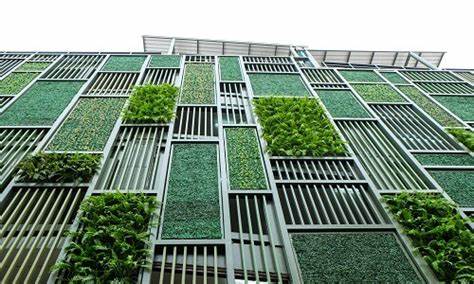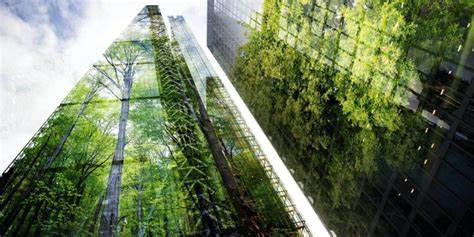
BIM – Building Information as Data Modeling – provides digital 3D models of a building’s physical and functional attributes. Additionally, storing data on the building’s performance from its lifecycle to monitor energy use and efficiency. Through creating one virtual model that is in connection to a building, BIM allows the facility managers to experiment and run tests of numerous ways of reducing energy consumption.
For instance, BIM allows one to model the outcome of various upgrades in equipment, material alterations or layout changes that impact green issues like heating, cooling, lighting and others. Retrofitting the existing building inventory with BIM integrated gives optimum structures in-built for eco-transformation. Through these virtual detailed models, companies have the leading edge to define the areas with most impact that require investing in major or minor renovations which enhance efficiency.
Overcoming Barriers to Enable Widespread Greening Existing Building Stock
Large-scale application of interoperable BIM norms guarantees that architects, contractors and facility management teams working in retrofitting can cooperate well. Utilizing BIM to establish a standard digital map of efficient retrofitting opportunities ranging from HVAC replacements to LED lighting upgrades, completes the missing piece needed to practically and in a cost-effective manner improve older buildings through retrofitting.
As a developing world nation with a large building stock in dire need of sustainability refurbishment, this national project lets South Africa wonder about greening existing buildings.
Integrating BIM Standards to Unlock Future Greening Existing Building Stock
The country is presented with a unique possibility. The green building investment opportunity in South Africa is in project to hit $7 billion by 2030. Moreover, it would represent the beginning of the country’s green building transformation. The way South Africa does this is to start with integrating BIM now. Therefore, when the existing assets are already green and efficient in the future, the efficiency will be accelerated.
Building on to the firm footing in informational modelling, country’s architects, contractors and property managers tend to be supplied with the necessary tools to make an overall makeover of the building stock beginning from the lighting fixtures to the ventilation infrastructure. Instead of greening buildings as separate islands, an incorporation of the common BIM platform will help identify whole systems improvements.
This pragmatic strategy entails a much faster payback on the capital investments into holistic retrofits and repurposing that lead to the consumption of energy being drastically lower. Laying these informational platforms beforehand further makes it possible for the country to surpass its global counterparts and lead in the scaling-up of existing green buildings stock.
Prioritizing BIM Adoption for Greening Goals
A gap exists between South Africa’s BIM implementation which is currently slowing. This is in comparison to the leading countries where BIM informational modeling standards are in accreditation. Although, the country is in preparation to accelerate its journey towards BIM advancement. During this upcoming year, construction enterprises shouldn’t skip this point and hurry to start implementing this BIM technology.
They will engage consultants who are BIM-accredited and training employees with the ISO 19650 procedures. In the future it will become a valuable asset for your companies supporting every major greening tender. Perhaps the biggest impact by BIM in the context of the built environment, which makes for more than a quarter of the South Africa’s emissions, is a better efficiency of the assets.
The expansion of professional experienced staff also plays a role in quality control and timely tracking of projects as large-scale retrofitting of existing building stock occur. Primarily, BIM adoption marking out a way for the full-scale sustainable development of aging structures in South Africa for tomorrow.
Conclusion
South Africa`s quest for advancing the sustainability goals through the building sector encompasses refurbishing and greening the currently existing buildings. This is not a simple undertaking. By adopting generic BIM modeling and mapping efficiency enhancements, the country can reach to a big level of fuel and emissions saving by its existing collection of old assets.
Developed by governments, information management systems and industry are now the base of the superpowers. Hence, building owners and contractors should not wait any longer in adopting and using the powers.
Building on present BIM implementation capacity of the experts will empower South Africa to rebuild today in a way to be environment-friendly of tomorrow. The adoption barriers can be overcome by the nation that would, as a result, enable its success in retrofitting that thousands of structures. This, in turn, could provide a worldwide blueprint for the greening of existing building stocks.

